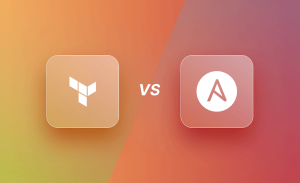
A database view is a virtual table derived from one or more tables or other views. It doesn’t store data itself but rather provides a way to query data from underlying tables in a specific manner. Views allow users to simplify complex queries, restrict data access, and provide a logical abstraction of data. There are different types of database views, each with its own functionality and features:
- Simple Views:
- Simple views are based on a single underlying table.
- They can be used to hide certain columns of a table or present a subset of data.
- Simple views are helpful for enhancing data security by limiting the exposure of sensitive information.
- Complex Views:
- Complex views are based on multiple underlying tables or other views.
- They can involve joins, calculations, and aggregations.
- Complex views are used to present data from multiple sources in a unified manner, simplifying complex queries.
- Indexed Views (Materialized Views):
- Indexed views store the result of a complex view as a physical table, making query processing faster.
- They are especially useful for aggregations, joins, and complex calculations, improving performance.
- However, they come with maintenance overhead as the indexed view needs to be updated whenever the underlying data changes.
- Updatable Views:
- Updatable views allow users to perform insert, update, and delete operations on the view.
- These changes are reflected in the underlying tables, and the view is treated as if it were a real table.
- Updatable views are beneficial for providing a simplified interface for data modification.
- Partitioned Views:
- Partitioned views divide large tables into smaller, manageable partitions based on a specific criteria.
- These views allow for easier data management and improve query performance by limiting the amount of data scanned.
- Partitioned views are often used in data warehousing scenarios.
- Hierarchical Views:
- Hierarchical views are used to represent hierarchical relationships between data, such as organizational structures or nested categories.
- They are often used for querying and displaying hierarchical data without complex joins.
- System Views:
- System views (also known as catalog views or metadata views) provide information about the database itself.
- They contain information about tables, columns, indexes, permissions, and other database objects.
- System views are useful for database administrators and developers for analyzing the database schema and usage.
- Dynamic Views:
- Dynamic views are defined by a query that can change its definition at runtime.
- They allow users to modify the query parameters to change the view’s output.
- Dynamic views are used when the query parameters are not known in advance.
Functionality and Features:
- Abstraction: Views provide a logical abstraction of data, allowing users to work with simplified representations of complex data structures.
- Data Security: Views can restrict access to specific columns or rows, enforcing security by limiting the exposure of sensitive data.
- Data Integrity: Views can enforce data integrity rules by allowing only certain types of data modifications.
- Simplification: Views simplify complex queries by providing pre-defined joins, calculations, or aggregations.
- Performance Optimization: Indexed views improve query performance by storing the result of complex calculations or aggregations.
- Data Aggregation: Views can be used to aggregate data from multiple tables and present it in a summarized format.
- Data Partitioning: Partitioned views divide large tables into manageable segments, improving manageability and query performance.
- Data Modification: Updatable views allow users to insert, update, and delete data in a simplified manner.
- Hierarchical Queries: Hierarchical views simplify querying and displaying data with parent-child relationships.
- Metadata Access: System views provide access to metadata information about the database and its objects.
In summary, database views come in various types with different functionalities and features, enabling users to interact with data in a more organized, secure, and efficient manner. They serve as a powerful tool for simplifying queries, enforcing security, and providing a logical representation of complex data structures.
Database views have several uses and benefits in database management and application development:
- Data Security and Privacy: Views allow you to restrict access to sensitive data by showing only specific columns or rows to certain users. This ensures that sensitive information is not directly exposed to unauthorized users.
- Simplifying Complex Queries: Views can encapsulate complex joins, calculations, and aggregations, providing users with a simplified way to query data without needing to understand the underlying database schema intricacies.
- Data Abstraction: Views provide a layer of abstraction between the physical database schema and the user. This means changes to the underlying schema won’t necessarily affect the views, preserving compatibility with applications.
- Consistency and Standardization: By using views to present data, you can ensure that multiple users or applications are accessing the same data in a consistent manner, reducing data discrepancies.
- Performance Optimization: Indexed or materialized views can significantly improve query performance by pre-computing aggregations, calculations, or complex joins. This reduces the need to perform these operations on the fly.
- Data Aggregation and Summarization: Views can be used to create summarized or aggregated representations of data, which is particularly useful in reporting and business intelligence scenarios.
- Legacy System Integration: When integrating with legacy systems or external data sources, views can be used to map the external data to match the existing schema of your database.
- Providing Different Perspectives: Different users or applications may require different perspectives of the same data. Views can be tailored to meet these specific requirements without altering the original schema.
- Data Access Control: Views can enforce access control by providing a way to limit data access to certain groups or roles within an organization.
- Logical Data Modeling: Views can be used to model logical relationships between data, which may not be explicitly defined in the physical schema.
- Data Denormalization: In cases where joining multiple tables becomes a performance bottleneck, views can denormalize the data and reduce the need for complex joins.
- Hierarchical Data Queries: Views can be used to simplify hierarchical data queries, such as organizational charts or category trees.
- Cross-Database Queries: If you have multiple databases, views can be used to create a unified way to query data from different databases.
- Data Transformation: Views can transform data in real-time, allowing for on-the-fly conversions, calculations, or formatting before presenting the data to users or applications.
- Data Presentation: Views can provide a user-friendly representation of data, such as converting codes to human-readable labels.
Overall, database views are a powerful tool for managing, presenting, and securing data in a way that meets the diverse needs of users, applications, and reporting requirements. They enhance data abstraction, security, and flexibility while optimizing query performance and data consistency.





